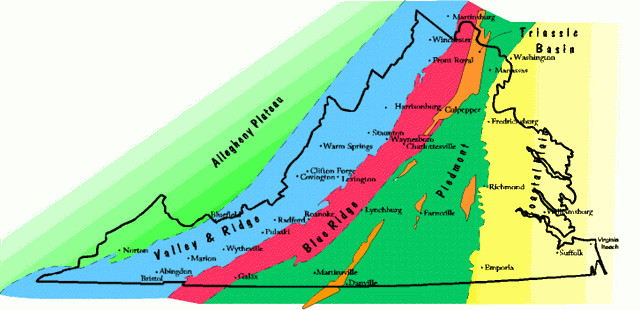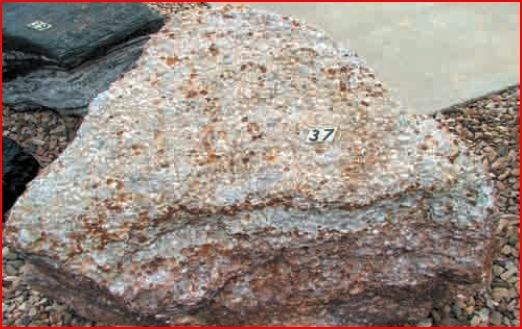Channels Natural Area Preserve EarthCache
Channels Natural Area Preserve
-
Difficulty:
-

-
Terrain:
-

Size:  (other)
(other)
Related Web Page
Please note Use of geocaching.com services is subject to the terms and conditions
in our disclaimer.
I want to give a HUGE thank you to xenolith for allowing me to adopt these caches!!
About this earthcache:
This earthcache is listed with permission and is a hike of approximately 3 miles (one way) with 1000ft in elevation rise from parking at Rt 80. For accuracy, the coordinates will place you on top of the rock outcrop, with a number of cliffs surrounding. Be careful of your footing, and explore the area both on top of the boulders and below them for an amazing location like none other in the area. It is not a log requirement, but feel free to share some of your pictures from the area.
Ownership:
The Department of Conservation and Recreation and Department of Forestry dedicated this state natural area preserve in April of 2008. The Channels, the 53rd state natural area preserve, is an area of significant high elevation forest, rock outcrop and cliff communities. The name of this area is derived from a series of quite large and impressive boulders and eroded crevices that occur on a portion of this natural area preserve. The 721-acre Channels Natural Area Preserve is part of a 4,836 acre State Forest that was purchased by the Virginia Department of Forestry from The Nature Conservancy in March 2008. The area is best accessed by the Brumley Mountain Trail.
Access:
After years of discussion, planning and construction, the Brumley Mountain Trail is open to the public as of June 2012. The 14-mile walking path runs along the spine of Clinch Mountain, from State Route 80, through the Channels State Forest, the Channels Natural Area Preserve, and on to Hidden Valley Lake. This has been a project in the making for many years due to its complexity. A number of different landowning properties have been in cooperation to make the trail a reality. The Virginia Department of Game and Inland Fisheries maintain the Hidden Valley Wildlife Management Area which includes Hidden Valley Lake. Brumley Cove Baptist Camp owns property bordering and has some easements for access as well. The ridgetop trail is the Channels State Forest, which is jointly managed by the Virginia Department of Forestry and the Virginia Department of Conservation and Recreation, Division of Natural Heritage. Finally, Alona Kennedy, a private landowner allowed the use of the fire tower road from Route 80. Mountain Heritage of St. Paul, VA and hundreds of volunteers provided the construction of the trail. The trail is dedicated to the stewards of the mountain, Charles Kennedy and Jack Kestner.
At this time, there is no camping allowed along the trail. Hiking does not require a State Forest Use Permit, but some other activities do. Some sections are foot traffic only, while some allow mountain bike and horseback riding. Please plan appropriately by visiting the Virginia Department of Foresty site at: http://www.dof.virginia.gov/stforest/channels.htm.
Rock types:
Virginia is home to a variety of rock types and is generally broken up into five belts which extend from the southwest to the northeast. The differing regions of the state are heavily influenced by the geology of the area. The Channels Natural Area Preserve is located within the Valley and Ridge province. The ridges of the Province are generally composed of Conglomerate Rock or Sandstone, while the valleys of the Province usually contain Limestone, Dolomite, and Shale.

Conglomerate
is a sedimentary rock which is made up of other rocks or rock fragments which have become cemented together. A Conglomerate is similar to another rock type, a Breccia, but differs in that Conglomerates are made up of fragments which are rounded. These fragments are known as clasts. Another categorizing factor of Conglomerates is that the clasts much be larger than 2 millimeters. Below is an image of a Conglomerate which was found in Russell County, VA.

Sandstone
is a sedimentary rock composed of sand-sized minerals or rock fragments. The most common component is quartz or feldspar as these are plentiful in the Earth’s crust. Sandstone is found in a variety of colors, commonly including tan, brown, yellow, white and black. The clasts which make up Sandstone must be between 1/16 and 2 millimeters. Below is an image of a Sandstone wall in Buchannan County, VA.

Rock weathering:
Over millions of years, rocks are weathered through a variety of processes. The primary weathering process is physical abrasion which reduces the size of the clasts and dislodges them from the main rock formation. Physical weathering can occur through a variety of methods including temperature, frost, and hydraulic action.
Thermal Stress Weathering
results from the expansion and contraction of rock, caused by excessive temperature changes. This is a common occurrence where the daytime and nighttime temperatures differ greatly. The force from the temperature changes can cause the outer layers to peel off of a rock in sheets.
Frost Weathering
is the collective name for a process where ice is present. When water freezes, it expands nearly 10% in size. For water that has entered cracks in rocks, or penetrated into porous rocks, this expansion can cause pieces of the rock to break apart. As a repeated freeze-thaw condition occurs, water penetrates deeper into the rock, causing the next round to have greater effect.
Hydraulic Action
occurs when water powerfully enters a crack in a rock. As this happens, a layer of air is trapped at the bottom of the rock. This air is compressed due to the pressure of the water. When the water leaves the cavity, the air rushes out with explosive force due to the compression. This repeated action causes the rock to weaken and in time, clasts to break loose from the main formation.
How to log:
Please answer the following questions in an e-mail to us. Short, simple answers are fine.
1) Using your new found knowledge of classifying sedimentary rocks of the Valley and Ridge Province, what type of rock do you believe is here and how do you know?
2) Have a look at the area, what weathering process do you believe caused the Channels to form and why do you think?
3) What is the prevailing height of the rock boulders?

Additional Hints
(Decrypt)